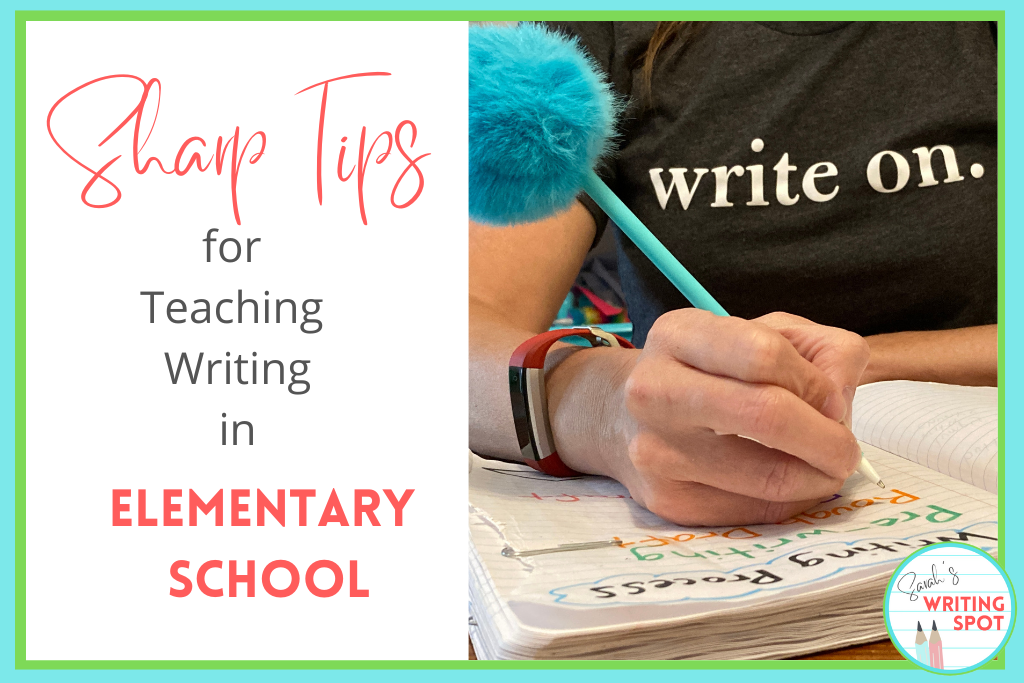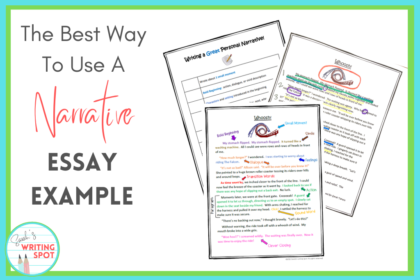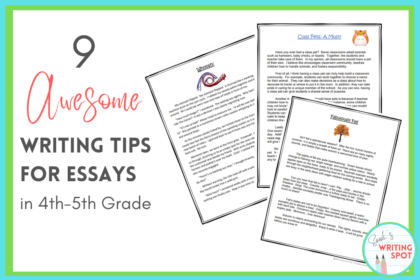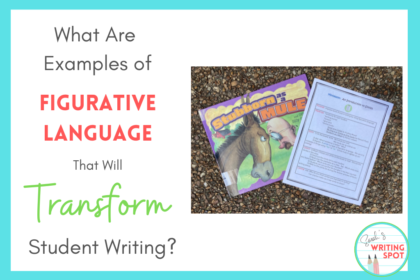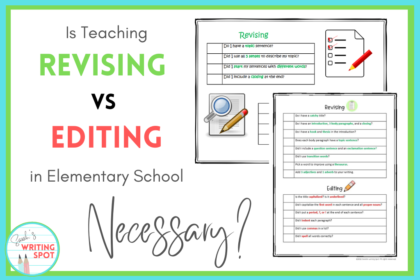Whether it’s your first year or 10th year as a teacher, teaching how to write can be a little scary! Some curriculums offer very little structure for teaching how to write which can leave you even more unsure of yourself. How do you know if you’re doing it right? Where do you start? I want to help ease that anxiety by laying out some structured strategies that can get you headed in the right direction!
Before we jump in, though, are you looking for more regular advice to keep you going throughout the year? Remember, …you don’t have to do this alone! Two heads (or more!) are always better than one. With all the overtime you put into teaching, you deserve some free lesson plans and resources to keep you afloat. Whether you are teaching in school, virtually, or at home, teaching is all about collaboration!
Strategies for Teaching Writing to Beginners
I still remember the day I first learned to ride a bike without training wheels. It was on Christmas Day, and I had just gotten a shiny, pink bike hours earlier propped next to the Christmas tree…beside my twin sister’s (yes, you guessed it!) identical pink bike. After opening all of our presents, we were quick to hurry outside and try out our new wheels! There were definitely some skinned knees, wobbly wheels, and a few tears that afternoon, but in the coming days, we both started to get the hang of it.
The thing is, anytime you try something new, there are going to be bumps and bruises and wobbly moments. This leads me to tip #1…
Tip #1: Encourage A Growth Mindset
In 2nd-5th grade, students are just starting to take off with their writing. Yes, they may already know how to write a sentence with a capital letter and period, but depending on your grade level, your kiddos are most likely learning how to write a paragraph or essay for the first time. As teachers, we need to remember that learning these complex skills is like learning how to ride a bike. Their first tries won’t be perfect, they’ll be nervous and insecure, and they will need LOTS of encouragement and reassurance. Which leads me to…
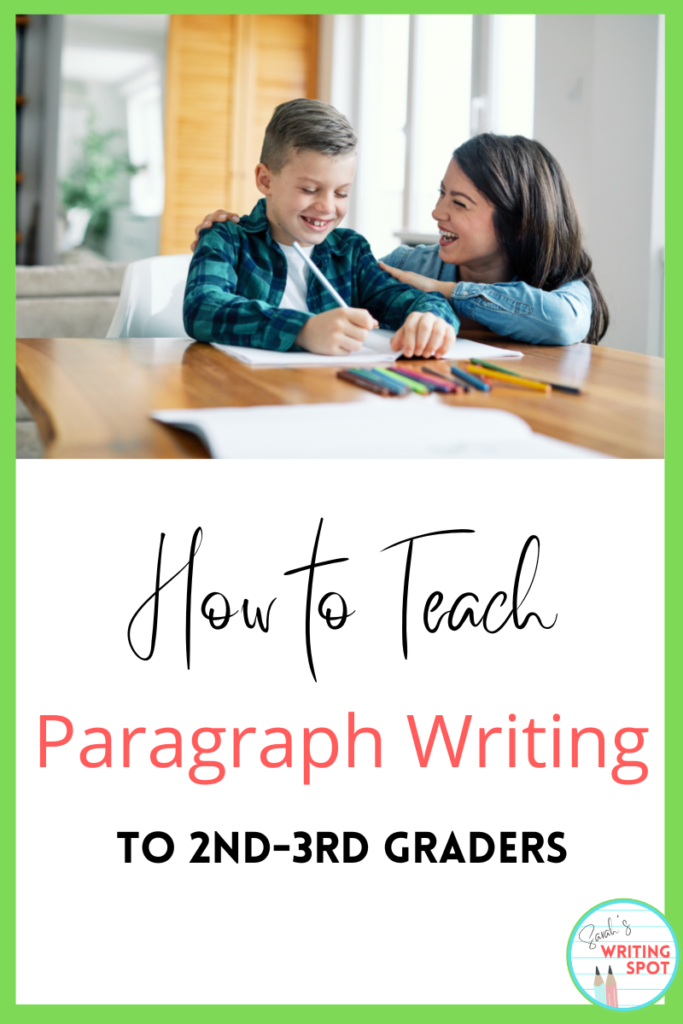
Tip #2: Praise the Glows and Note the Grows
I know it’s sometimes hard to overlook some of the glaring mistakes students make as beginning writers, but I promise you: students are much more likely to grow with praise than putdowns. I’m not sayin’ there’s not room for editing and revising, because there is! (There’s just a special time and place for it.) I’m saying that your student will be much more motivated to write if you focus on what they are doing well. (Aren’t we wired that way as adults, too??) They worked hard on their pieces! Show them you’ve noticed!
As for your students’ grows, take some side notes on what they still need help with. Use these notes to guide your future lessons. Do your student writing pieces seem flat? Teach your next lesson on synonyms and adjectives! Are their writing pieces rife with missing punctuation? Teach a grammar lesson on run-on sentences and how to remedy them! When teaching writing to beginners, you don’t need to tell your students every single thing they did wrong for every single piece. Back to riding that bike: Would you want to ride a bike if you were being criticized for every little mistake? We want our students to stay on their bikes and keep at it!
Tip #3: Model, Model, Model!
If someone handed you a bike and you had never seen someone ride it, would you know what to do with it? Of course not! The same goes for writing paragraphs and essays. For example, if a student has not seen someone model how to write an essay from scratch, how can we expect them to do it? We can’t! That is our obligation as teachers: to show. them. how.
When I start a writing unit for a new type of writing, the very first thing I always do is show them an example of a writing piece and we analyze it. What does a good hook look like? What is a thesis? Where do you see figurative language? Later lessons continue with me writing along with my students. Some call this “parallel writing” or “I write, you write.” For example, I write a topic sentence while “thinking aloud” about my thought process, and then I give students a turn to write their own. We take turns throughout the paragraph or essay in this fashion…to the very end! Remember, your students are beginners. They will need a lot of hand-holding at first. But just like riding a bike, after lots of practice (and consistency), you can start to take away those training wheels.

Best Ways to Teach Writing for Different Grade Levels
One of the best ways to teach writing to all 2nd-5th graders is to have a balance between structured writing pieces and freewriting pieces. They need to practice both! For example, make time in your writing schedule for direct instruction on skills such as using graphic organizers, writing topic sentences, or using correct dialogue punctuation. However, ALSO include time for students to enjoy some simple, low-stakes writing in their journals. Both are necessary to cultivate well-rounded writers.
Having a balance is important for all writers, but what sort of expectations should we have for different ages? (Alert! You’ll want to read this if you are moving grade levels or teaching multi-age children! ) Let’s take a look…
Tip #4: Teaching Writing to 2nd Graders and 3rd Graders
What should you expect when teaching writing to 2nd graders and 3rd graders? All children are different, of course, and express different levels of readiness at different ages. However, most curriculum standards include the following:
Composing
- paragraph that is 5-10 sentences long
- topic sentence
- 3 or more detailed sentences using the 5 senses
- closing sentence
Written Expression
- use of adjectives
- varied sentence beginnings
- varied sentence endings
- use of simple linking words to connect ideas
Mechanics
- complete sentences
- basic capitalization
- end punctuation
- proper spelling of grade-level words
- title underlined and capitalized
Most curriculums also highlight the importance of exposing children to different types of writing, such as descriptive, opinion, expository, and narrative. Teaching how to write each of these will make your students more well-rounded writers.
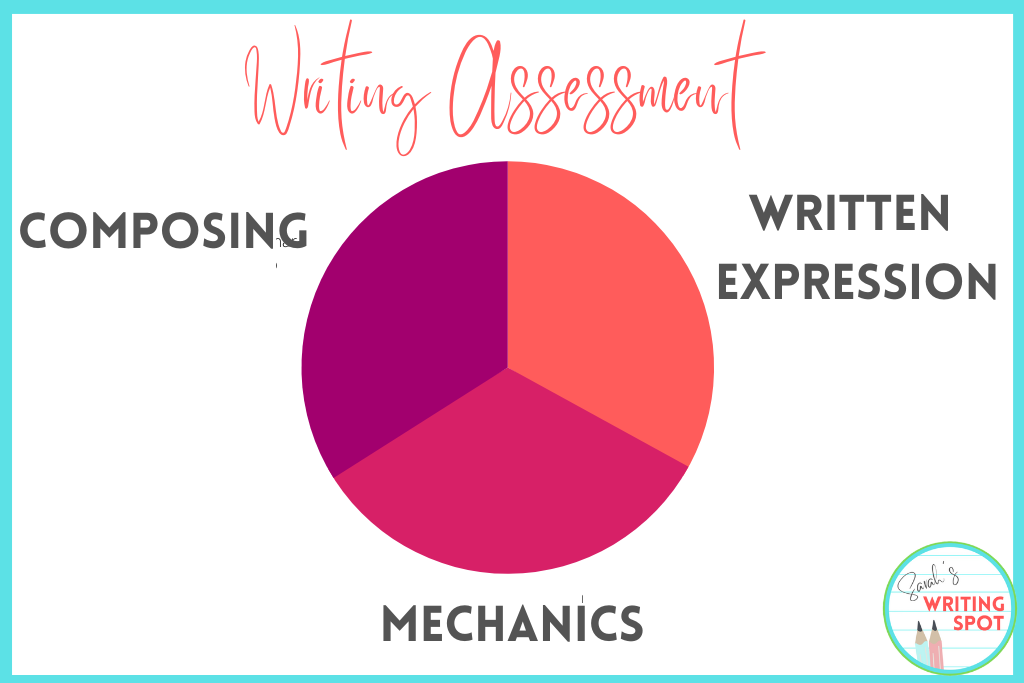
Tip #5: Teaching Writing to 4th Graders and 5th Graders
What about teaching writing to 4th graders and 5th graders? These kiddos are now ready to make the leap from one paragraph to five paragraphs! This may seem like quite a lofty jump, but if a student has a solid foundation for writing a well-rounded paragraph, this isn’t as daunting as it may seem. Let me repeat: the key lies in having a solid foundation for writing one well-rounded paragraph. (So don’t go building that house if the floors aren’t finished!)
Here’s a snapshot of what most curriculum standards include for 5-paragraph essays:
Composing
- 5 paragraphs
- introductory paragraph with a hook and thesis sentence
- 3 body paragraphs with topic sentences and supporting details
- closing paragraph that restates the thesis
Written Expression
- use of adjectives, adverbs, and figurative language
- varied sentence beginnings and endings
- varied sentence length
- use of sophisticated linking phrases to connect ideas
- quoted texts (literary writing)
Mechanics
- complete sentences
- proper capitalization
- proper end punctuation
- proper spelling of most words
- proper use of quotations
- title underlined and capitalized
Like the younger grades, students need to be exposed to different types of writing such as descriptive, persuasive (to include literary,) and expository. These are usually written in 5-paragraph formats.
Narratives, on the other hand, can’t be squeezed into 5 neat paragraphs. Teaching how to write a narrative is an entirely different topic (and blog post!) on its own. Like 5-paragraph essays, however, they become more sophisticated with higher expectations for the use of dialogue and expression of feelings. Students usually need to write multi-page stories for personal and fictional narratives.
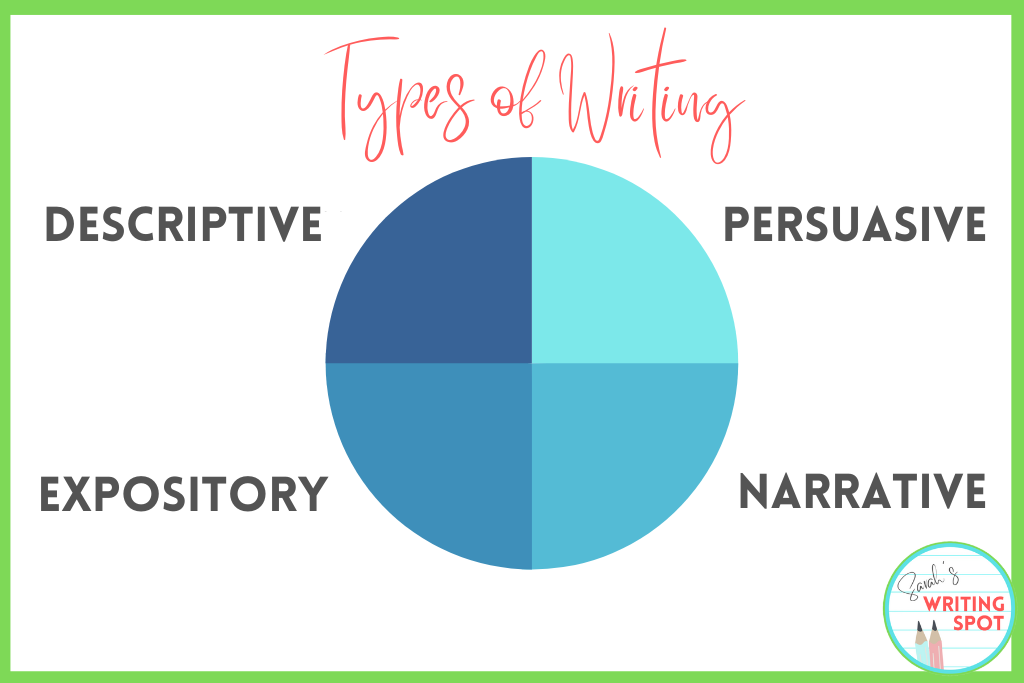
Teaching Writing Virtually is Possible!
“I’m back in the classroom now,” you say, “but what happens if we have to teach virtually again?” You’ve got this, my friend! Teaching writing virtually is totally doable…with a few adjustments:
Tip #6: Screen Share
If students can’t see you writing, they ain’t gonna learn a thang. Remember: modeling is key when teaching how to write. Give the “I write, you write” model a try!
Tip #7: Share Writing Aloud
Since you don’t have a visual of their writing, this will give you audio feedback on if they are truly gettin’ it.
Tip #8: Use GoogleDocs
It is super awesome. Most 3rd graders are ready for this. 4th-5th graders definitely are, too. You will be able to see your students’ writing in “real-time” and give them quality feedback directly on the page.
Teaching Writing is Rewarding and Worth It
Teaching writing is __________. Challenging? A breeze? A roller coaster? A joy ride? No matter how you feel about it, know that I am here to keep you goin’. Some final words of advice as you continue on your writing journey:
- Commit some time each day dedicated to writing. If it’s not written down in your plans, it will most likely get sucked down the time drain.
- Stick with a schedule that works for YOU. You may do things differently than the teacher or parent next door, and that is O.K.!
- Celebrate your students’ writing successes. Your kiddos’ successes are your successes, too. Take time to give yourself a pat on the back, as well!
Most importantly, give yourself some grace. Whether you are battling the frenetic pace of a classroom teacher or juggling the dizzying schedule of a homeschool parent, remember that any progress is good progress. Even if you make only 1 change this year, then that’s a WIN. Write on, my writing friends!
Sarah
Looking for more regular advice to keep your writing plans sharp this year? Sign up for monthly freebies, tips, and discounts on new products!
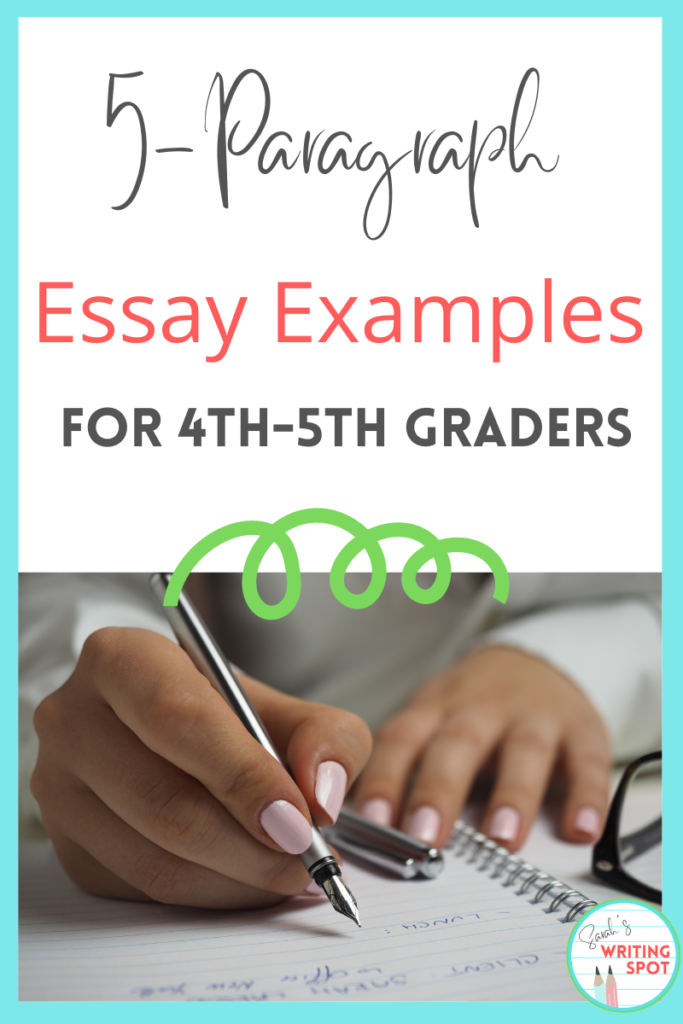
Want your lesson plans written FOR you? Give these a try!
Introduction to Paragraph Writing: Descriptive, Opinion, and Research
10 Essay Examples: Descriptive, Persuasive, Literary, Expository, and Narrative
Related Articles on Teaching How to Write
Simplify Writing Instruction With These 5 Teaching Tricks
Common Core Standards for Reading and Writing: What Parents Need to Know
How to Support Struggling Writers

